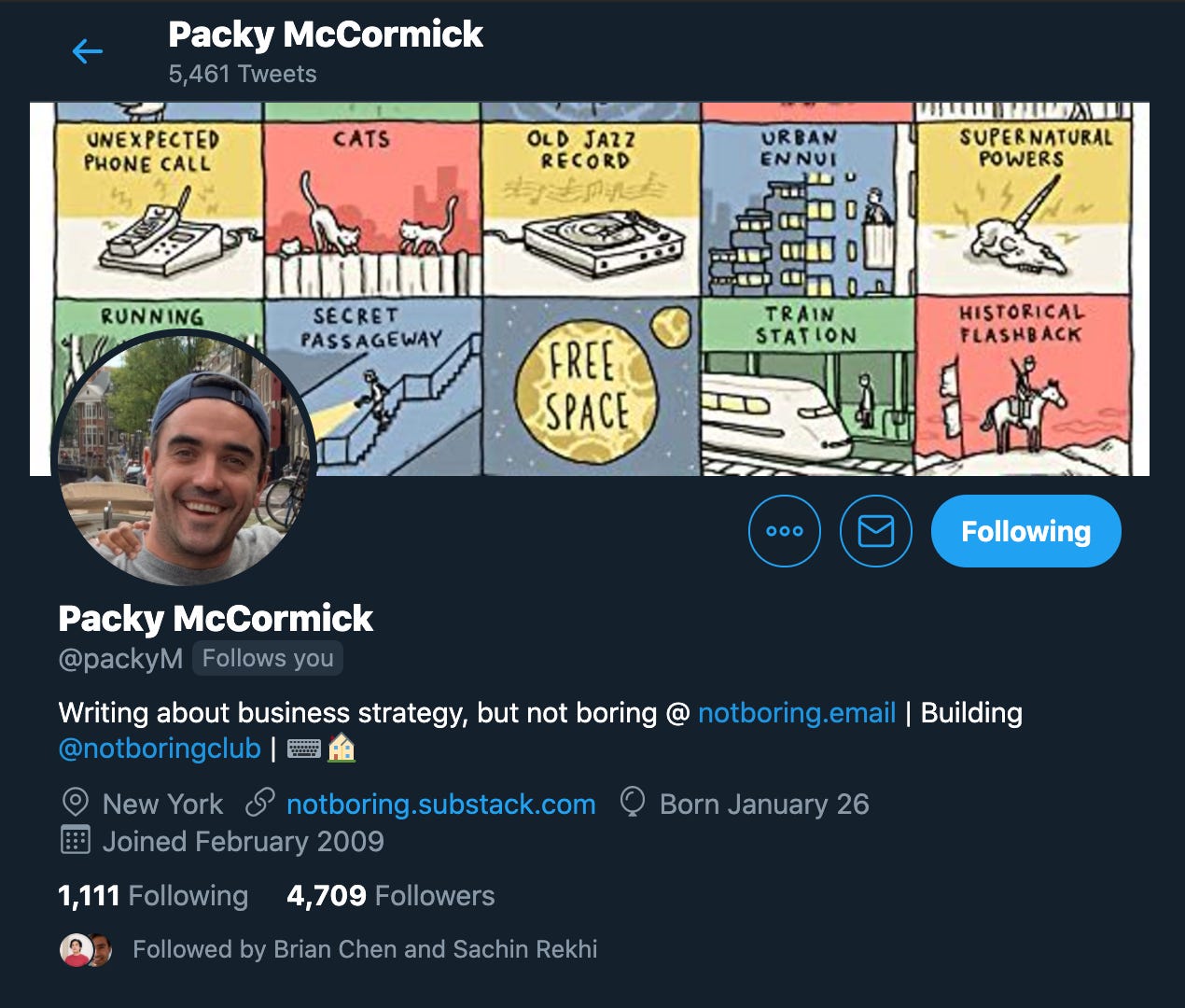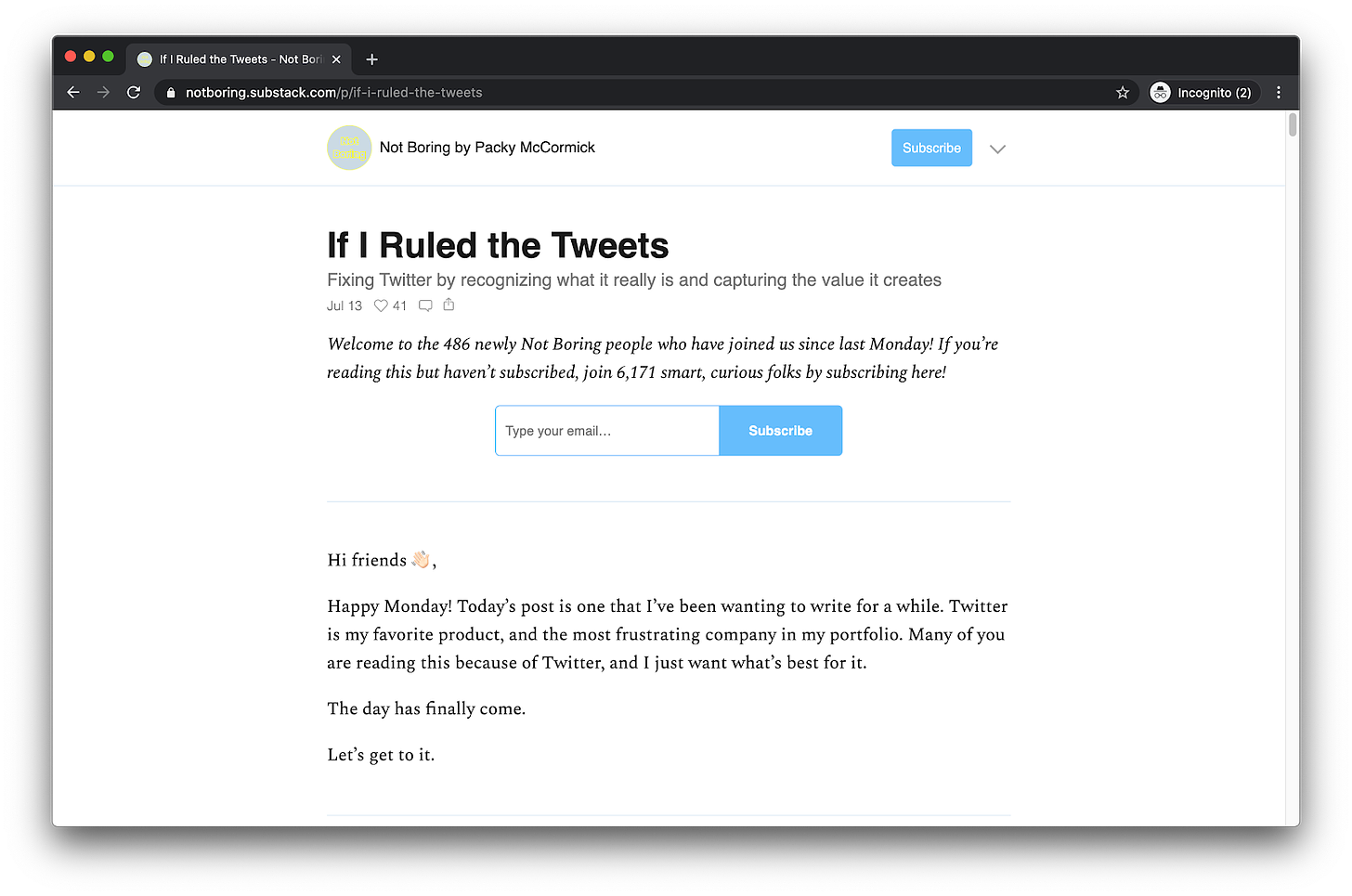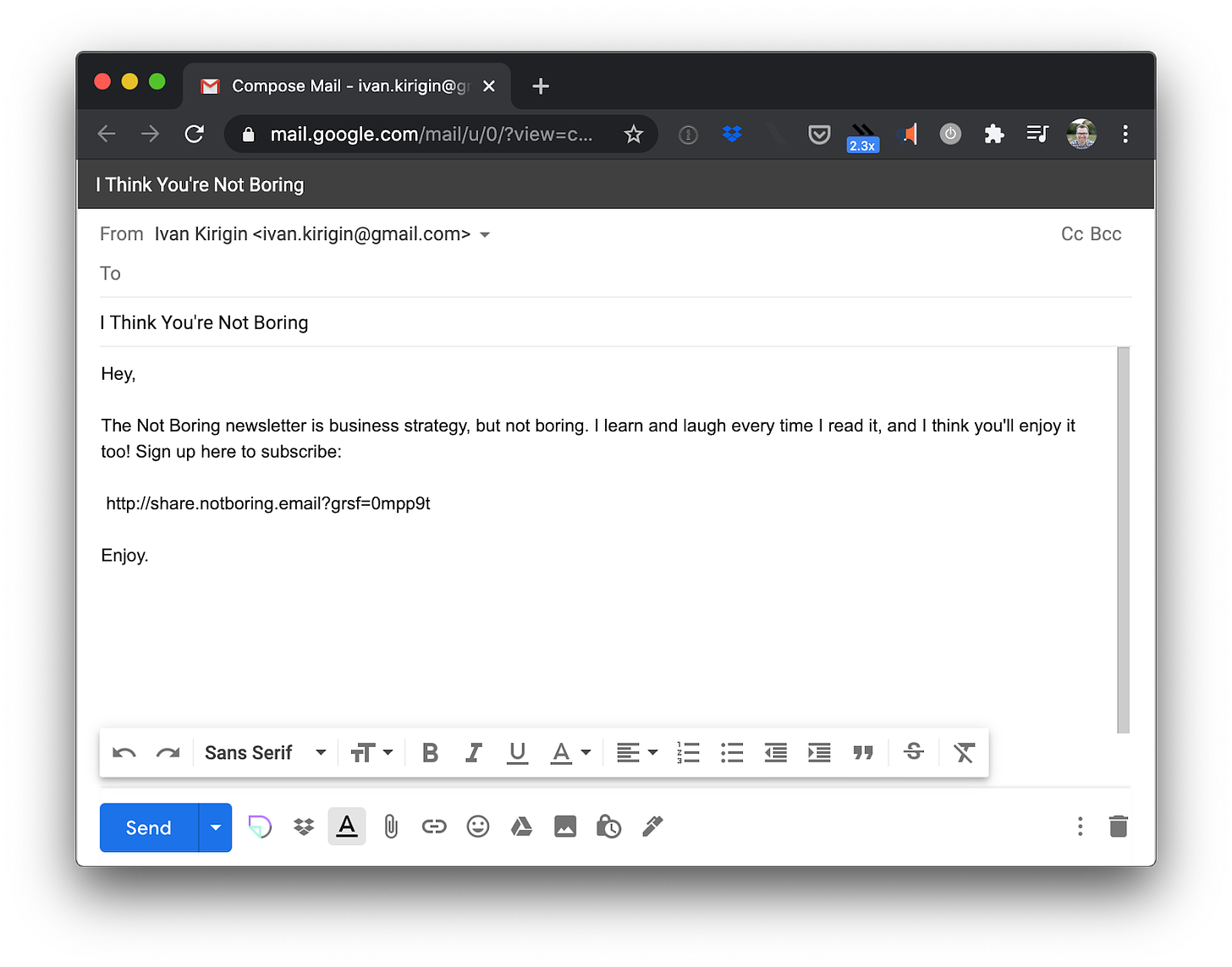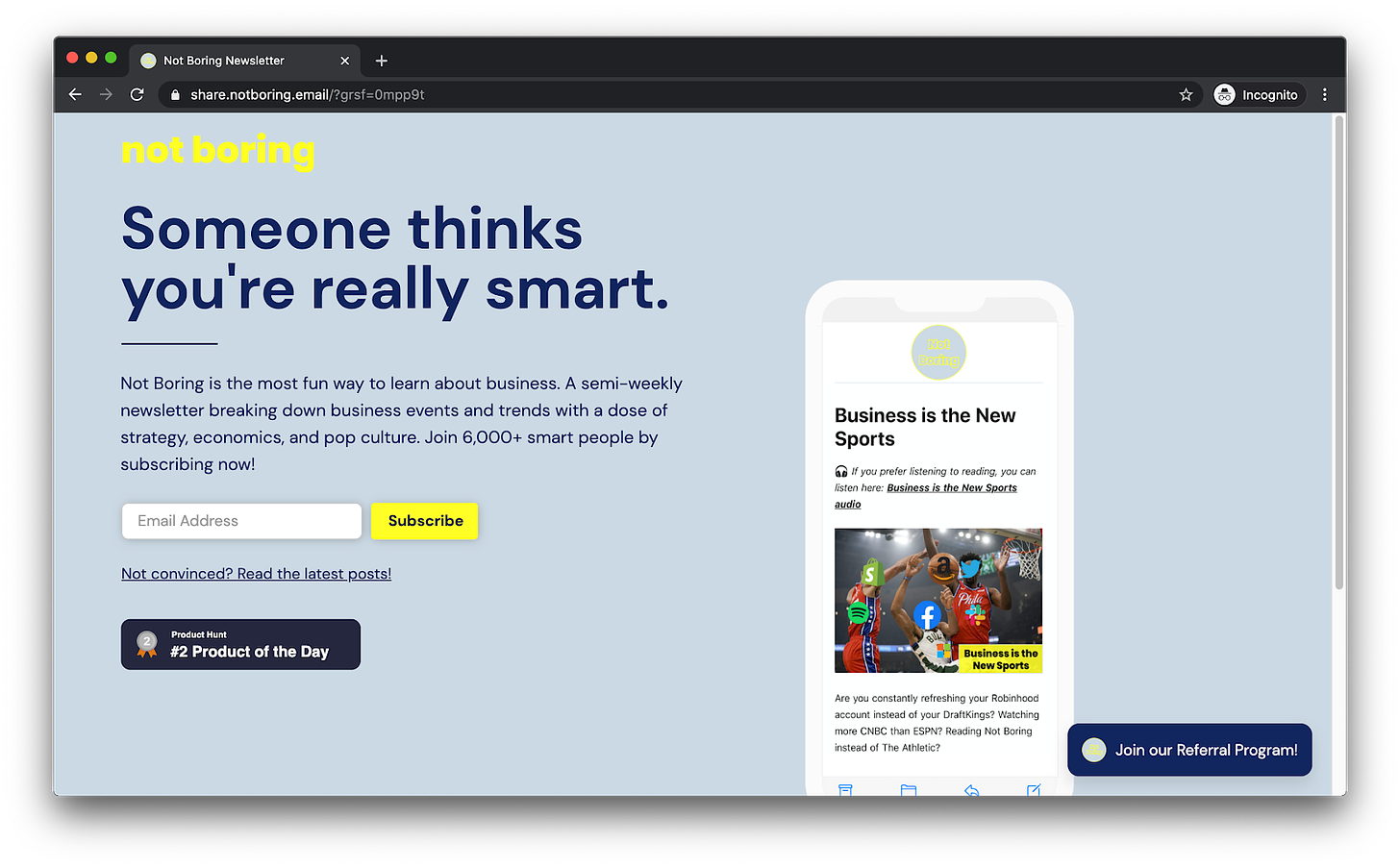Working Session: Growing Substack with Referrals
I heard Packy McCormick was using referrals to grow his substack, so we set up a working session to dive into the program.
The result is this video which goes into lots of details. Please subscribe on YouTube. I put a timed transcript below, along with the notes I used to prepare for the session.
0:00 Introduction
0:26 What is "Not Boring"?
2:21 Who is your audience?
3:11 The goal is growth, while retaining quality.
4:35 The economics of syndicates vs fund
7:08 How to configure content for premium vs free subscribers
9:45 Exploring the new DIY media trends
11:30 Writing about small vs large companies
12:22 What tools do you use for your Substack?
14:25 Webflow vs other landing page tools like Landen.co
15:50 Ivan's stack at Tango.vc
16:55 How does Growsurf help?
19:20 Start diving into the user flow
19:55 Guessing Hunter Walk's name on the leaderboard
20:30 Powerlaw distribution of the referrer leaderboard.
21:15 Launching your Substack on Product Hunt
22:55 Ivan Kirigin's background helping run growth at Dropbox and founding YesGraph to help startups grow
25:45 Getting subscribers vs getting referrers, and optimizing the related call to action
27:15 What to send in a welcome email? Too many links is confusing.
28:40 Feature request: AB testing calls to action in Substack welcome emails. How Dropbox ran AB tests for referrals
31:00 How stickers and t-shirts are surprisingly motivating.
31:25 Don't make the user do more work. For example, if you already know who they are, don't ask for their email again
32:35 Why the referral sharing channel matters. You could break down successful shares across channels like Facebook, Dropbox, and Twitter
34:45 The challenge of writing copy that will put words in a user's mouth
36:15 Why importing contacts and send-all is bad. Ivan shares a story from Dropbox about removing send-all.
38:00 Personalizing landing pages helps improve conversion.
39:25 How social proof improves landing page conversion.
40:15 How to break down startup metrics.
42:45 Why to measure viral loops continuously not in average aggregate.
44:45 How Substack building their own referral features would help the ease of the flow.
46:45 How tracking invites helps optimize the flow.
47:15 Why the biggest mistake is not promoting the referral program enough.
48:45 What should Substack put in a referral program? After including a referral link, earning a paid subscription would be incredible.
50:40 Allowing you to test which posts bring in the the most new users.
51:50 How good content matters for the amount of growth, with Y Combinator's YouTube channel used as an example. 1/3 of all their traffic is from 3 videos about Elon Musk and Mark Zuckerberg.
Profile Link (or tweet, or elsewhere)
Two links: domain and substack.
Substack landing page
Obvious goal: subscribe
Individual Post Landing Page
no links to referrals
Subscribe Email
link to referrals, with 6 other links
Referral sending page
Slow to load
No way to participate above the fold, but obvious to scroll
Not obvious those are stickers to win
Enter email form to participate
This is an extra step. Many already have given you the email, you’re just not saving it.
Referral message
Nice subject
Clear call to action
Editable by user, without the UI
Referral landing page == subscribe page
Who is the inviter?
Subject works no matter who invited
Product hunt general social proof, along with “6000+”
Metrics:
These are for each time period, meaning they are a loop
On referral program / all subscribers # put links in newsletter - or their referral link
Invites / inviter # is this transparent in GrowFlow? Your analytics? Eg URL grsf=*
New / invites #
Specific Metrics
Track total referrals right before each newsletter is sent.
Put each in a spreadsheet, with (date, total, new).
Include total subscribers to get
aggregate growth rate: new subscribers / total subscribers
total referral growth rate: new subscribers from referral / total subscribers
percent of growth from referrals: new subscribers from referral / new subscribers
Interpolate if you need to get standard dates, eg weekly referral growth
Run longitudinal AB tests on (positioning, copytext, color) of referral prompts
If total referral growth rate increases, good
Even if percent of growth from referrals increases: good
Caveat: longitudinal tests will have conflating variables. Examples:
Marginal subscribers might default to lower referrer rates.
Marginal potential audience might be less eager to subscribe, lowering all channels
Your content varies!













